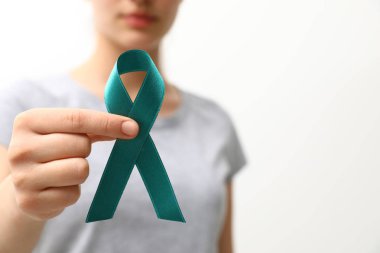Start the Year Strong: Empower Yourself with Knowledge About Cervical Cancer
January is more than just a fresh start and New Year’s resolutions – it’s also Cervical Cancer Awareness Month. This important health awareness month is a reminder to put yourself first and spread the word about a preventable but deadly disease.
By knowing cervical cancer – symptoms, diagnosis, treatment, and prevention – you can take control and get others to do the same.
What is Cervical Cancer?
Cervical cancer starts in the cells of the cervix, the lower part of the uterus that connects to the vagina.

Most cases are caused by persistent infection with high-risk types of human papillomavirus (HPV), a common virus spread through sexual contact. Not all HPV infections become cancer but some strains increase the risk.
This disease progresses slowly, often taking years for abnormal cervical cells to become cancerous. Screening can detect these changes early, making cervical cancer preventable and treatable when caught early.
Symptoms to Look Out For
Early stage cervical cancer has no symptoms, that’s why screening is so important.
As the disease progresses some symptoms may include:
- Unusual vaginal bleeding: Bleeding between periods, after sex or post menopause.
- Pelvic pain: Persistent pain in the lower abdomen or pelvis.
- Unusual discharge: Watery, pink or foul smelling vaginal discharge.
- Pain during sex: Discomfort that persists and gets worse over time.
These symptoms could be caused by other conditions but never ignore them. Get medical help ASAP.
How is Cervical Cancer Diagnosed?
The journey to early detection starts with screening, which identifies abnormal changes in cervical cells before they become cancer.
There are two main screening methods:
- Pap Smear (Pap Test): This tests cells from the cervix for precancerous or cancerous changes.
- HPV Testing: This detects high-risk types of HPV that cause cervical cancer.
If abnormal results show up, additional tests such as colposcopy, biopsy or imaging may be done to confirm the diagnosis and stage of cancer.
Treatment Options
Cervical cancer treatment depends on the stage, overall health and personal preference.
Common treatments include:

- Surgery: Early stage cancer may be treated with a hysterectomy (removal of the uterus) or conization (removal of affected cervical tissue).
- Radiation: High energy beams kill cancer cells.
- Chemotherapy: Drugs to kill or slow down cancer cells, often with radiation.
- Targeted Therapy and Immunotherapy: Advanced treatments that target specific parts of cancer cells or help the immune system fight cancer.
With advances in medical technology, many patients can achieve full recovery, particularly when the cancer is detected early.
Prevention Is Key
Preventing cervical cancer is all about being proactive and reducing the risk of HPV infection and detecting abnormal cell changes early. Here’s how:
- HPV Vaccination: Safe and effective vaccines are available for both men and women to protect against high risk HPV strains. Ideally given during adolescence but can be given up to 45 years old.
- Regular Screenings: Women should start Pap smears at 21 and follow their doctor’s recommendation for frequency.
- Safe Sex: Use condoms and limit your number of sexual partners.
- Quit Smoking: Smoking weakens the immune system making it harder for the body to fight HPV infections.
Spreading Awareness and Taking Action

Cervical Cancer Awareness Month is the perfect time to educate yourself and others about this preventable disease.
Share this with your loved ones, encourage screenings and HPV vaccination.By taking small steps today you can protect yourself and others from cervical cancer and have a healthier tomorrow.
Let’s make January the month we prioritize prevention, awareness and empowerment to fight cervical cancer.
Together we all can turn awareness, into action, and make a difference.





